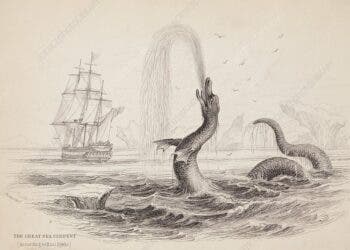In a detailed study on whale kinship and family ties, researchers report that just like humans, whales also cherish their ancestral roots and family ties.
A while ago, people used to believe that only humans can use tools — but Jane Goodall (and many researchers after her) showed that humans aren’t the only ones to do so. We’ve since found several species that build and use their own tools. Then, many thought that it’s our cultural and family ties that separate us from the animals. Lo and behold, that’s not true either. Several other species, including whales, have shown important cultural behaviors. This new study confirms that. Researchers have found that related whales returned to the same locations year after year, and decade after decade, passing the information from one generation to the next.
Researchers analyzed the structure of the beluga whale society, finding that migratory culture is inherited. Furthermore, this cultural inheritance maintains the family ties of beluga whales. This cultural legacy is so powerful that some travel as far as 6,000 kilometers each year.
“What intrigued us most was whether particular whales returned to where they were born or grew up and if this was an inherited behavior,” said Greg O’Corry-Crowe, Ph.D., lead author and a research professor at FAU’s Harbor Branch. “The only way that we could definitively answer these questions was to find and track close relatives from one year to the next and one decade to the next.”
Researchers also found that beluga whales exhibit an impressively broad range of vocal repertoires and acoustic systems which suggests that they form complex interpersonal relationships. They like to hang out in the thousands nearshore during the summer when the ice melts — which researchers call a whale’s version of an “icebreaker.”
Ultimately, researchers hope that this will not only enable us to better understand these surprisingly complex species but also devise better ways to protect them in the face of a changing environment — the polar regions, where the beluga whales live, are extremely vulnerable to climate change.
“Findings from our study are expanding our understanding of how sophisticated non-primate societies can be and how important culture is for the survival of these species,” said O’Corry-Crowe. “Our findings also will influence our thinking in terms of how populations and species are going to adapt to dramatic environmental changes. There are few places where this is more urgent than in the rapidly changing polar regions.”
Journal Reference: Greg O’Corry-Crowe, Robert Suydam, Lori Quakenbush, Brooke Potgieter, Lois Harwood, Dennis Litovka, Tatiana Ferrer, John Citta, Vladimir Burkanov, Kathy Frost, Barbara Mahoney. Migratory culture, population structure and stock identity in North Pacific beluga whales (Delphinapterus leucas). PLOS ONE, 2018; 13 (3): e0194201 DOI: 10.1371/journal.pone.0194201







